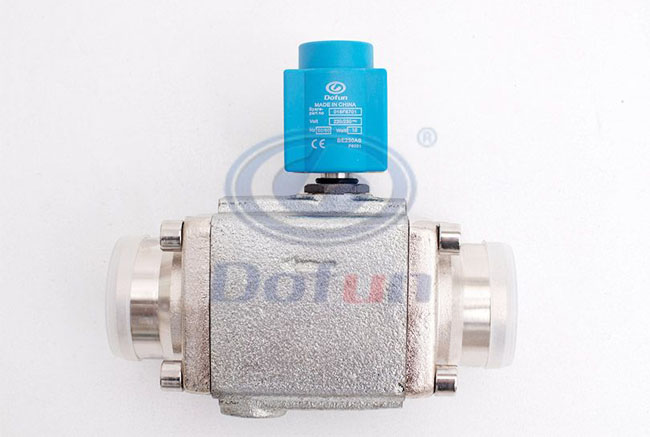Refrigeration Solenoid Valves
Valve selection should not be based on line size. The maximum allowable pressure drop should be determined according to the system requirements.
For example, the pressure drop of a refrigeration solenoid valve for a low temperature system must not exceed 0.25 psid. A hot gas defrost valve for the same system can be sized to pass the required flow rate at a pressure drop around the differential pressure from the high to the low pressure side (possibly 150 psid).
Published capacity data should always be used for size selection. It is important to avoid oversizing the pilot valve so that the minimum allowable operating pressure drop will not occur. This may cause the valve to jitter, "pop" or fail to open fully.
If a minimum differential working pressure limit exists, it will be issued with the other valve data.
It is also important not to exceed the maximum operating pressure difference (MOPD) between inlet and outlet. The solenoid must be able to operate at its MOPD rating (85% of the rated line voltage) according to the requirements of the safety agency. The MOPD of the same valve is usually lower when using a direct flow coil.
The maximum pressure rating (MRP) of the valve must also be at least equal to the maximum pressure expected in the application.MRP is the maximum internal pressure that the valve may withstand as specified by the solenoid valve manufacturer.

Solenoid Valve
As internal materials may not be compatible with other fluids, use the valve only with the fluid it is designed to handle. Also, do not use general purpose valves to shut off combustible materials such as natural gas or propane. These applications require solenoid valves to meet the special safety agency requirements for "safe shut-off service".
The instruction sheet supplied with the valve is the best authority for installation, but there are a few points to emphasise here.
1. Split valves with extended copper tubes are designed to be brazed without disassembly using suitable wet brazing. This is preferable because the valve has been factory tested for leaks and eliminates the possibility of leaks during reassembly in the field. Also, no parts can be lost or incorrectly assembled.
2. If the valve is fitted with a manually opened stem, ensure that it is opened during the nitrogen brazing purge and subsequent evacuation. Likewise, in some designs, keeping the elastomer or plastic seat material out of contact with the hot valve body during the brazing process can increase safety against thermal damage.
3. Never energise an AC coil that is not fitted to the valve for more than a few seconds. As mentioned earlier, the current consumption is largely influenced by the iron content in the core of the solenoid coil. With the coil removed and without iron, the current may be four times the normal current.
4. It is recommended not to install the valve with the plunger closure tube (coil tube) inclined downwards below the horizontal position. The reason for this is that system debris can build up in the tube, thus preventing correct magnetic contact between the plunger and the fixed pole shoe at the top. This can cause coil hum and excessive current draw.
Previous: None